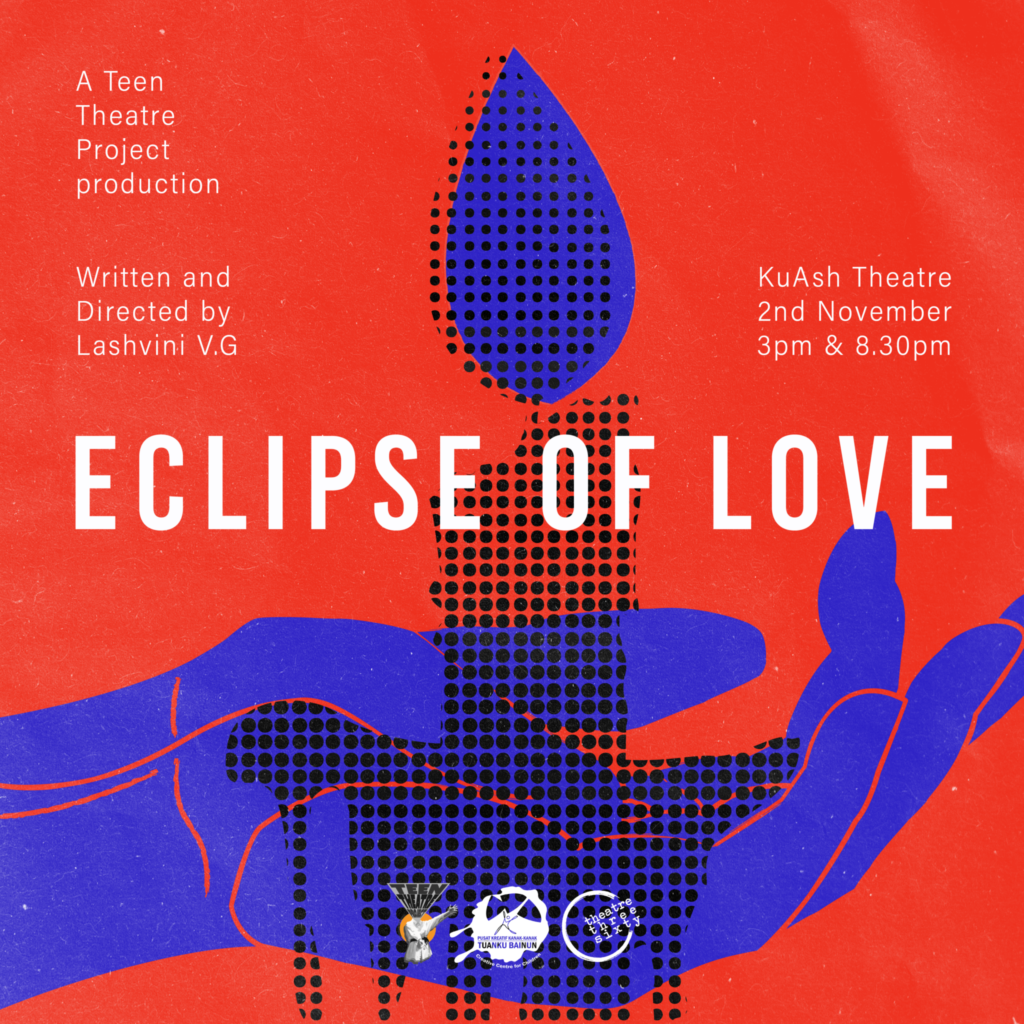
Eclipse of Love is a theatrical exploration of love in its many forms, familial, platonic, and romantic, told through abstract narrative and symbolic dialogue. This marked my debut as both playwright and director with Pusat Kreatif Kanak-Kanak Tuanku Bainun. At its core, the story traces memory, healing, and the light that lingers in the shadows of the past.
I wrote original poetry as monologues to deepen the emotional thread of the piece, allowing certain truths to surface in ways conversation sometimes can’t. Repetition and symbolism shaped the language, creating a rhythm that echoed the inner lives of the characters.
As director, I worked closely with the cast to explore the quieter layers of human nature, a performance grounded in empathy and restraint.
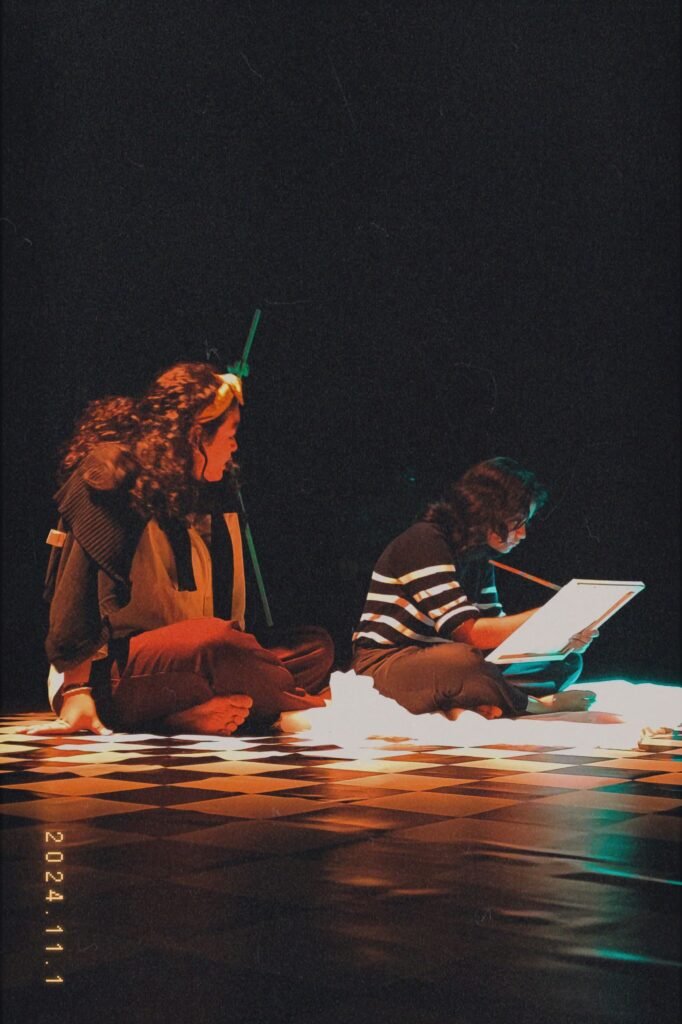

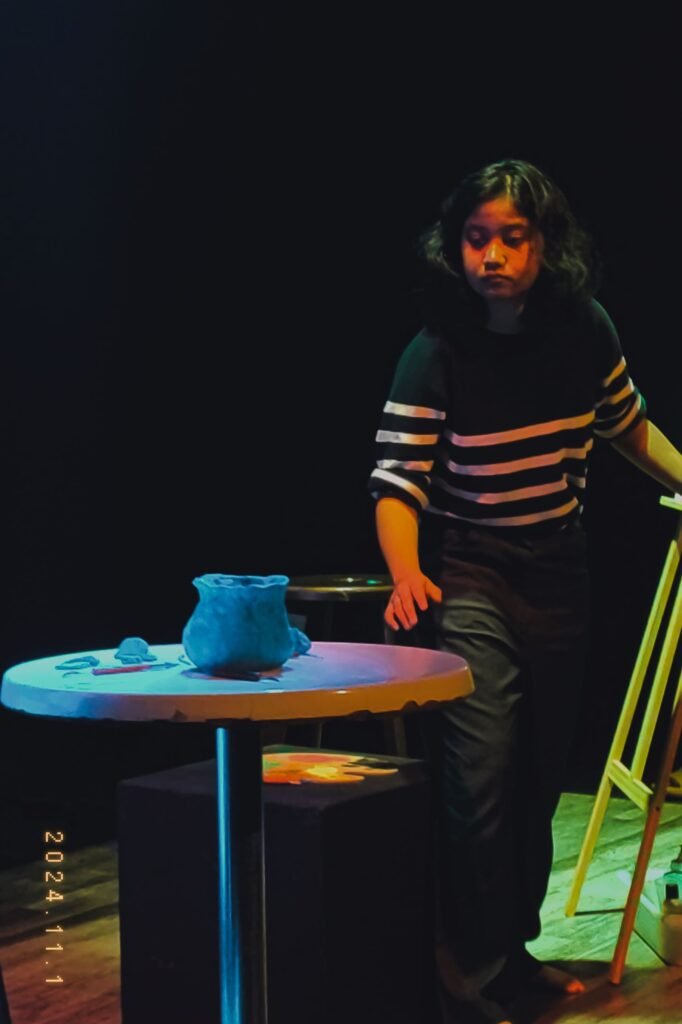
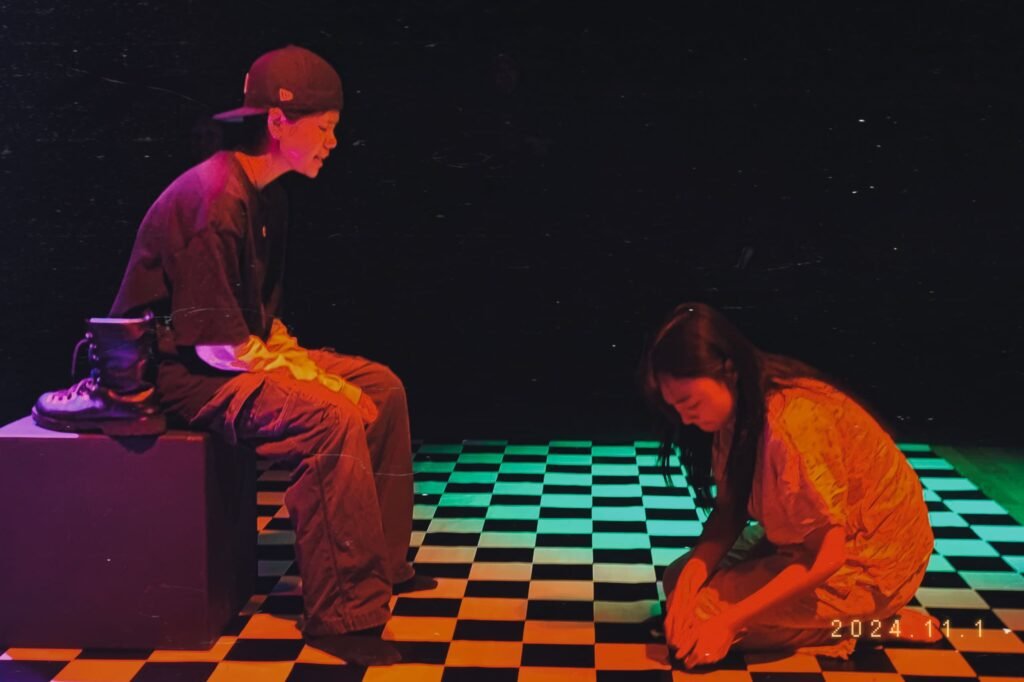
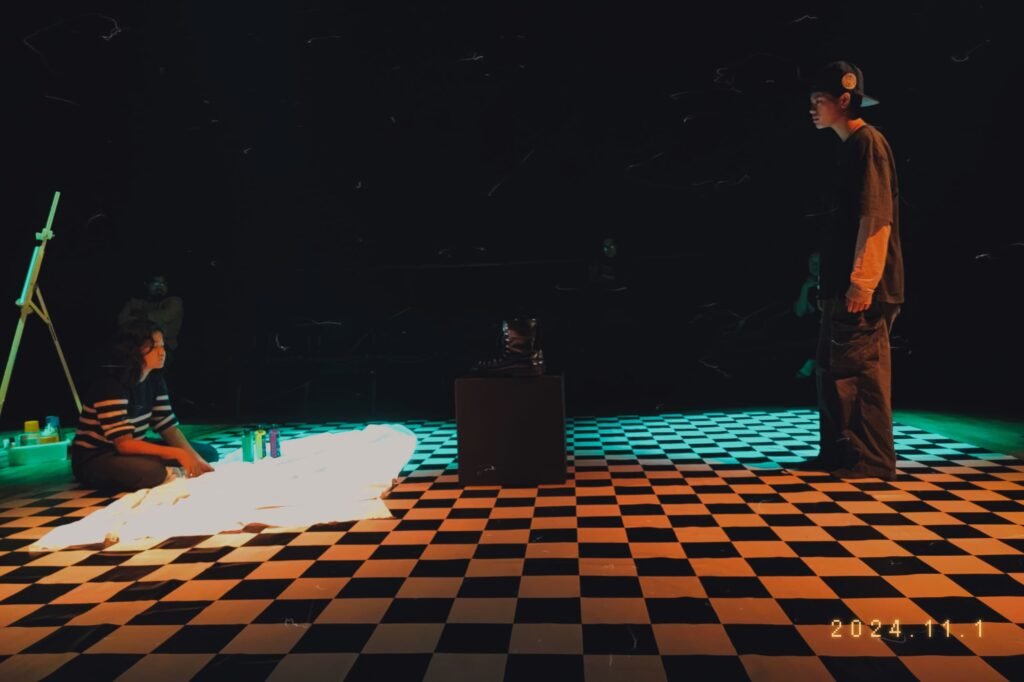
In this short scene, the painter begins to confront the emotional walls he built over a lifetime. Now, in the stillness after his passing, there’s a quiet shift, an acceptance of disorder, and a sense of freedom in that.
The monologue featured here is adapted from one of my earlier poems, reworked to reflect the painter’s inner state.
These shoes were placed in the mid-section of the stage facing the left-side of the stage to symbolize memories of the dead existing in the past, present and future.
The stage was divided into three sections to highlight different perspectives to the audiences clearly. The left-side shows what currently happens in the present time period, depicted as a family home.
The right-side of the stage is designed as an art studio where the “father” of the family stays, existing in the conceptual idea of a re-defined time and space of grief.
The mid-section of the stage is where characters who never exist in the same line meet, living and deceased. Always troubled.
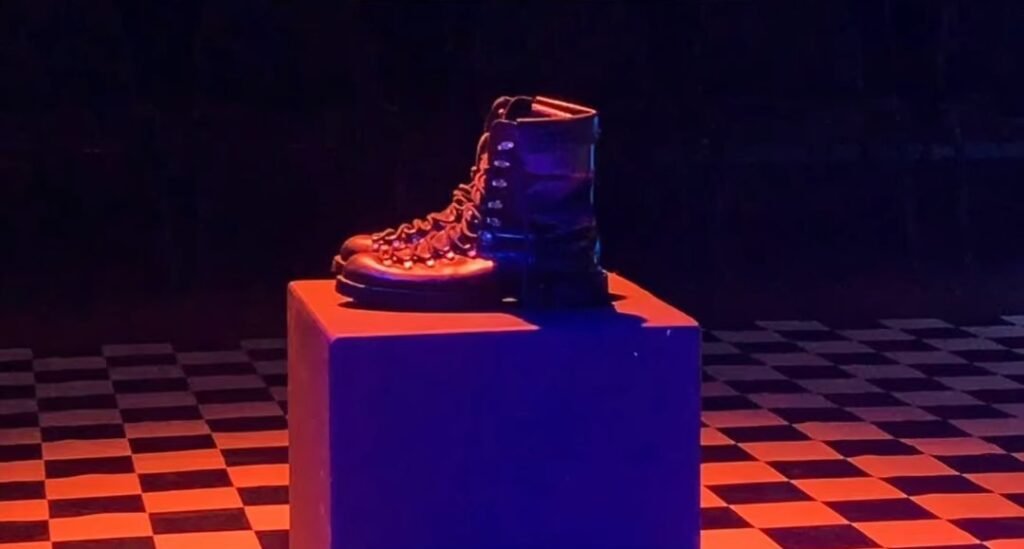

One of the production’s highlights included set design and particularly because of the abstract concept. Actors were taught how to wedge pottery and would create and destroy clay vases in live-time to add emotional depth and play with symbolism. I encouraged the idea of spreading paint on a cloth on the floor to further play into the symbolism and the idea of embracing a “mess” which can be depicted as “regrets” in a person’s life. To accept and move on. This is one of the many meaningful messages I wanted to share with my audience.
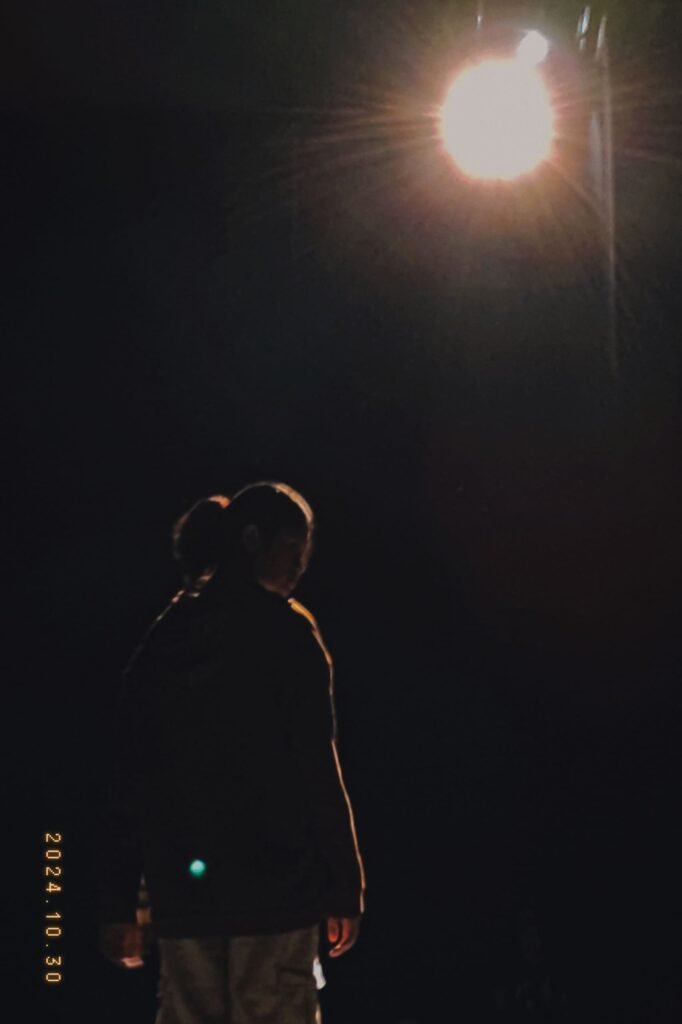
This production came to life thanks to the support of Christopher Ling, Artistic Director of theatrethreesixty and Arsyad Azrai, Head of creative Programmes at PKK Tuanku Bainun, both of whom were my mentors in this creative journey of producing my production.
I am filled with gratitude to work with the cast consisting of members from the Teen Theatre Project for their dedication into making this dream of mine come true. I am so immensely grateful for the opportunity to share this story that I hold very close to my heart with my audience, ranging from children to adults.
“Eclipse of Love” was more than a theatrical production; it solidified my passion for creating stories that linger in the heart and providing comfort to others.
Salt was the first theatrical production I acted in when I joined the Teen Theatre Project. It was an absurdist play that used repetition to lead to different outcomes of situations that occur in a very traditional Malaysian family home.
This play explored Malaysian stereotypes and traditional values and beliefs, which led to new perspectives and interesting discussion when learning to understand the story the script brought to me as an actor. Through elements such as dance and choreography and a comical approach to dialogues, I feel this play allowed audience members of all ages to heavily relate, offering a piece that is light-hearted but impactful. I feel that even myself, I got to explore the messages and intentions behind these traditional or culturally significant beliefs that are sometimes created into stereotypes that are not often used in the most positive light.
This production built my ground for preparing for the future projects I would be working on. It shaped my views to this day and taught me how to appreciate whatever work I had committed to.
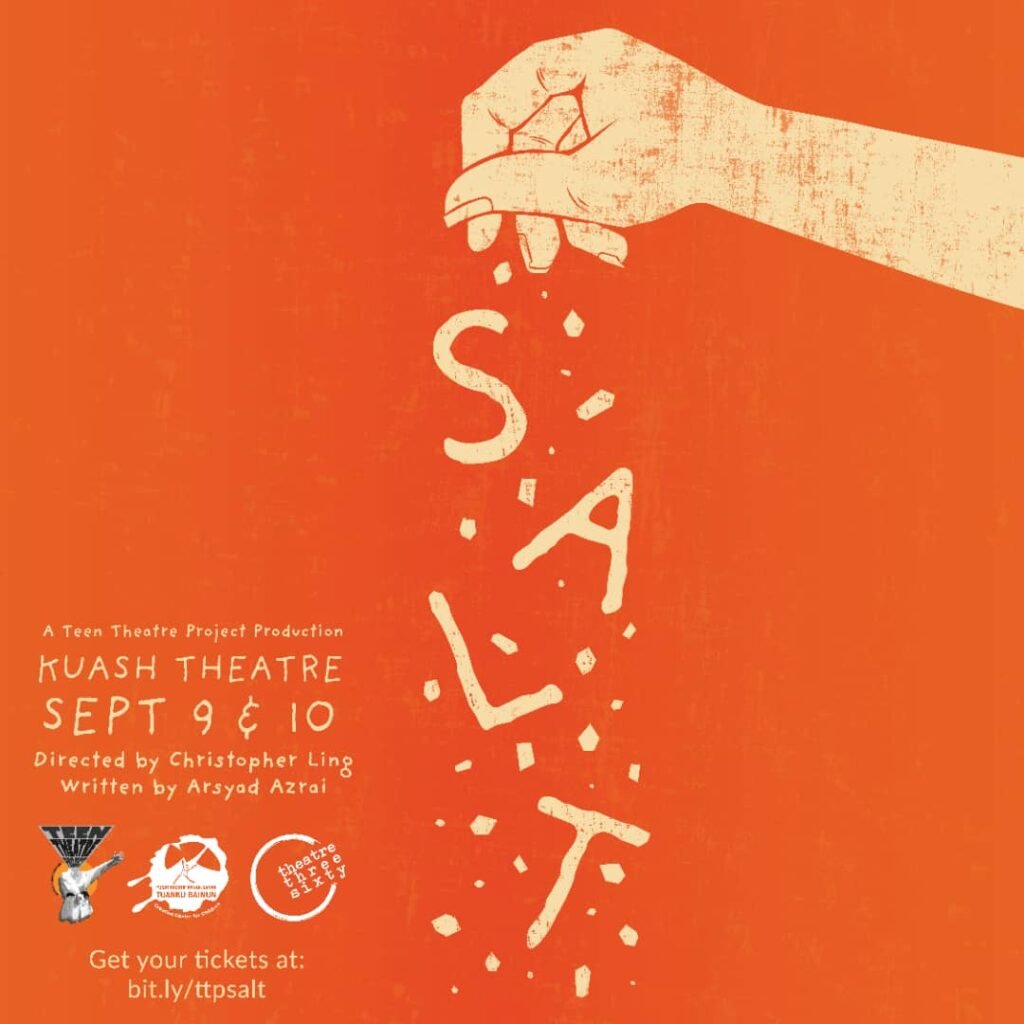
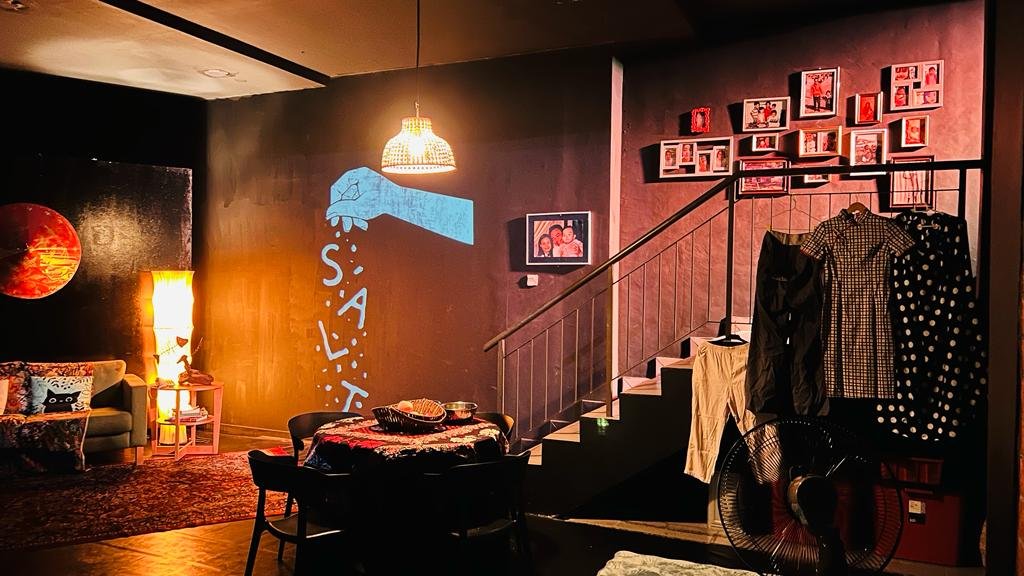
This is the set of SALT. We contributed to its design by suggesting elements that helped the space feel like the home we had imagined. The wall is covered in childhood photos from the cast and crew, evoking the intimacy of a shared family history.
The story follows three families from different cultural backgrounds, each navigating the same conversation, one that leads to different outcomes in each household.
The set brings together objects from various cultures, highlighting not their differences, but their shared warmth. From schoolbooks to pots and pans, even the foods mentioned throughout the play carry symbolic weight, reflecting the ties that hold families together.
This video captures the final scene of SALT. The choreography was intentionally absurd, joyful movements paired with blank, almost stoic expressions. While the soundtrack on its own feels light and comical, its contrast with the performers’ restraint creates a sense of unease.
The scene wasn’t designed to offer answers, but to leave the audience sitting with the discomfort of contradiction.
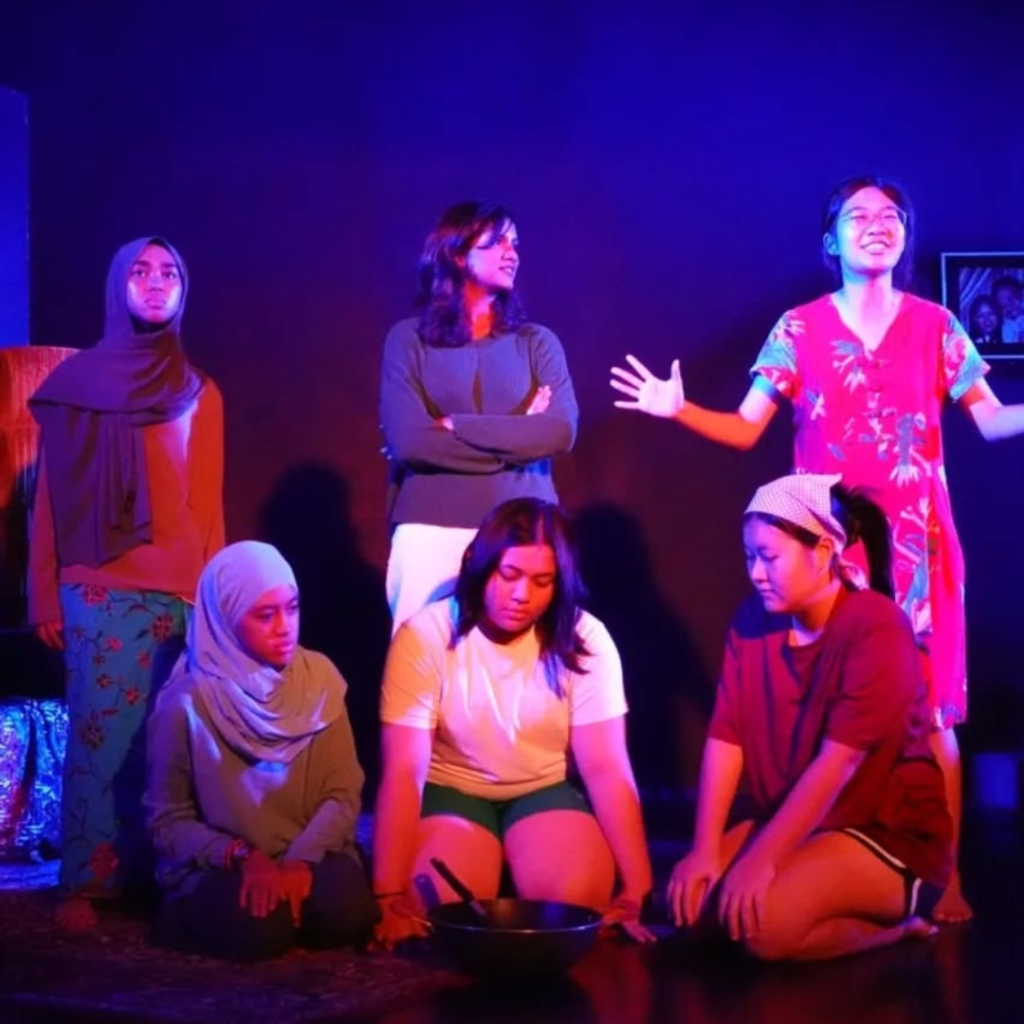
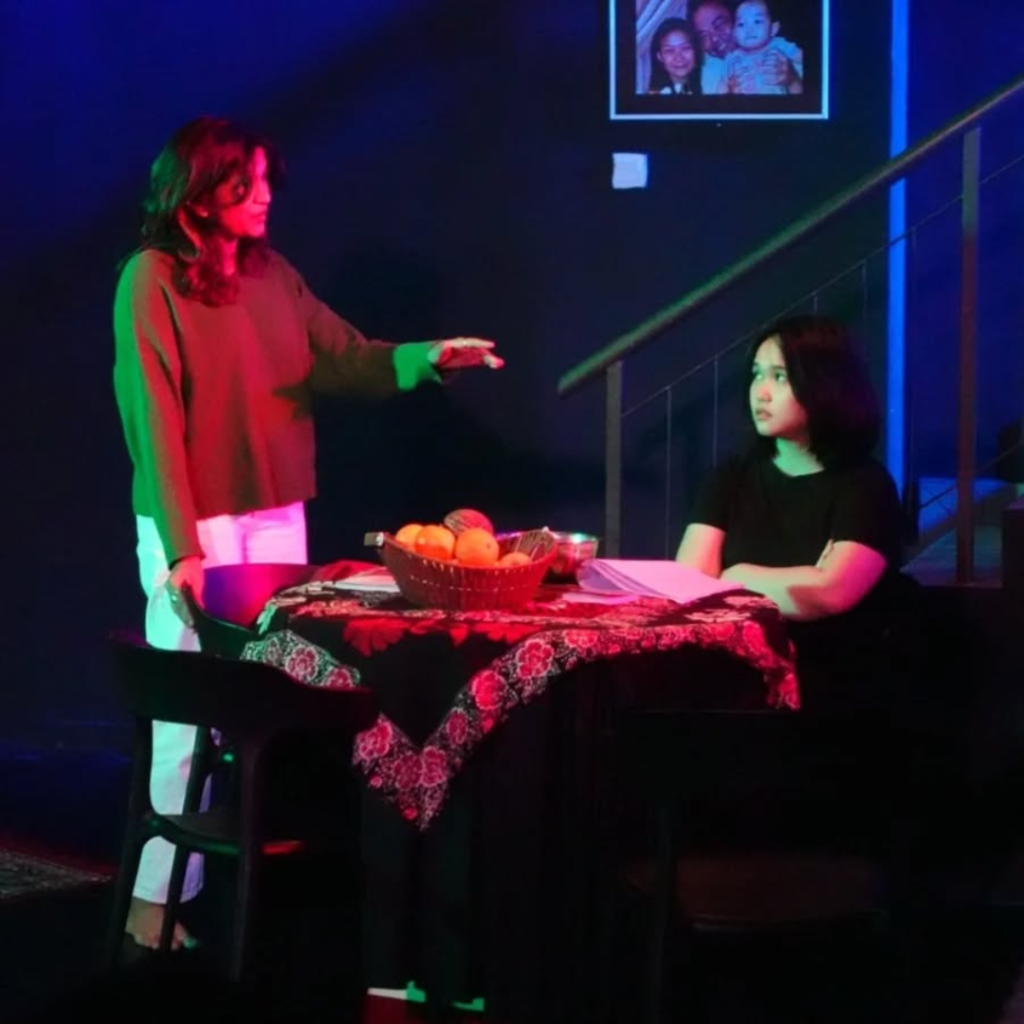
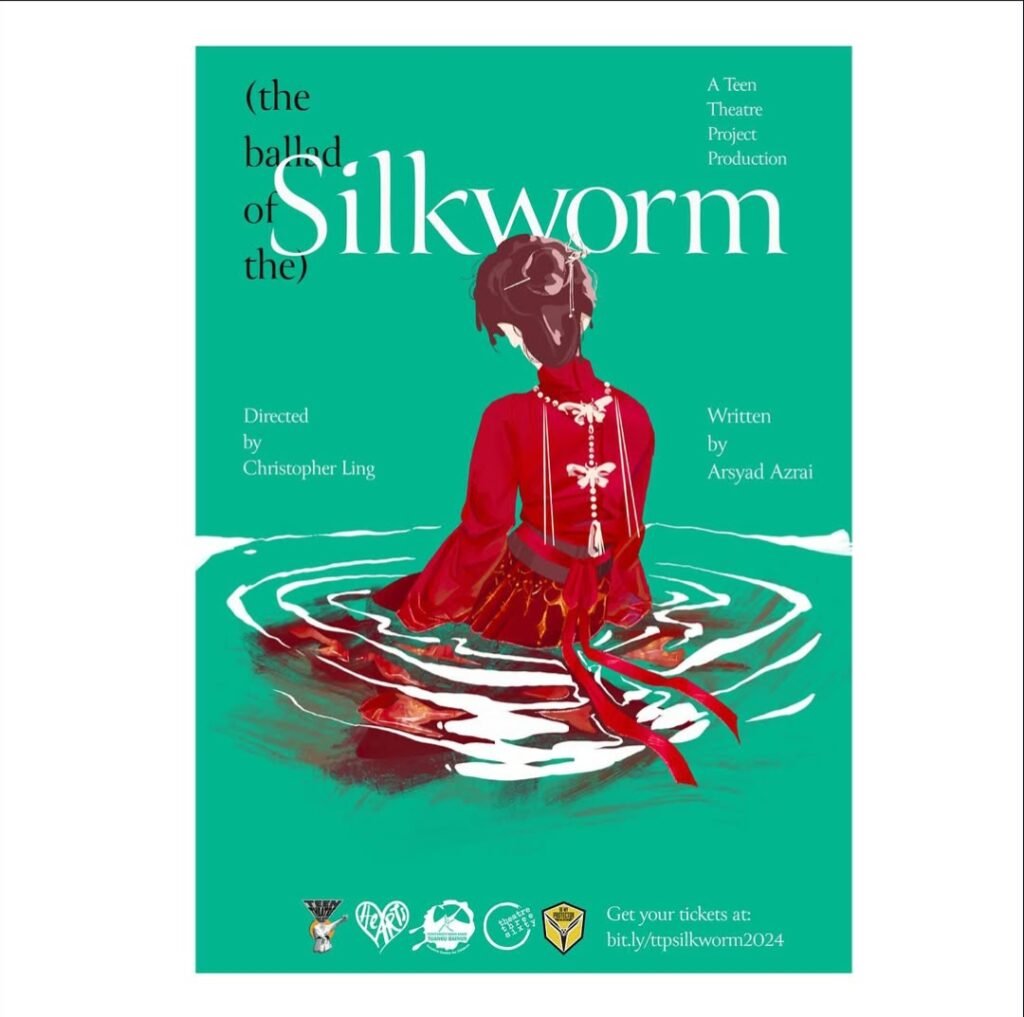
One of the most impactful theatrical pieces I have acted in is Silkworm. The story opens in a silk factory and delves into the lives of young girls working in such environments across the globe. This production required extensive research to accurately and respectfully portray characters whose experiences reflect the harsh realities faced by many. The weight of these roles was amplified by the responsibility to shed light on the hidden injustices and struggles endured by these children.
I learned to immerse myself in a world that, while distant from my own, remains a devastating reality for countless others. The process challenged me to understand and convey the depth of these characters without reducing their stories to just a mere performance. I worked with the cast and to deepen my own knowledge on the historical and cultural aspect through research to show authenticity into my role.
Through this experience, I feel that I became more aware of the power of theatre to amplify marginalized voices. This production was contributed to honoring the individuals whose stories inspired the narrative. Ultimately, Silkworm became more than a performance for m, it was an opportunity to engage deeply with a global issue and bring awareness to it.
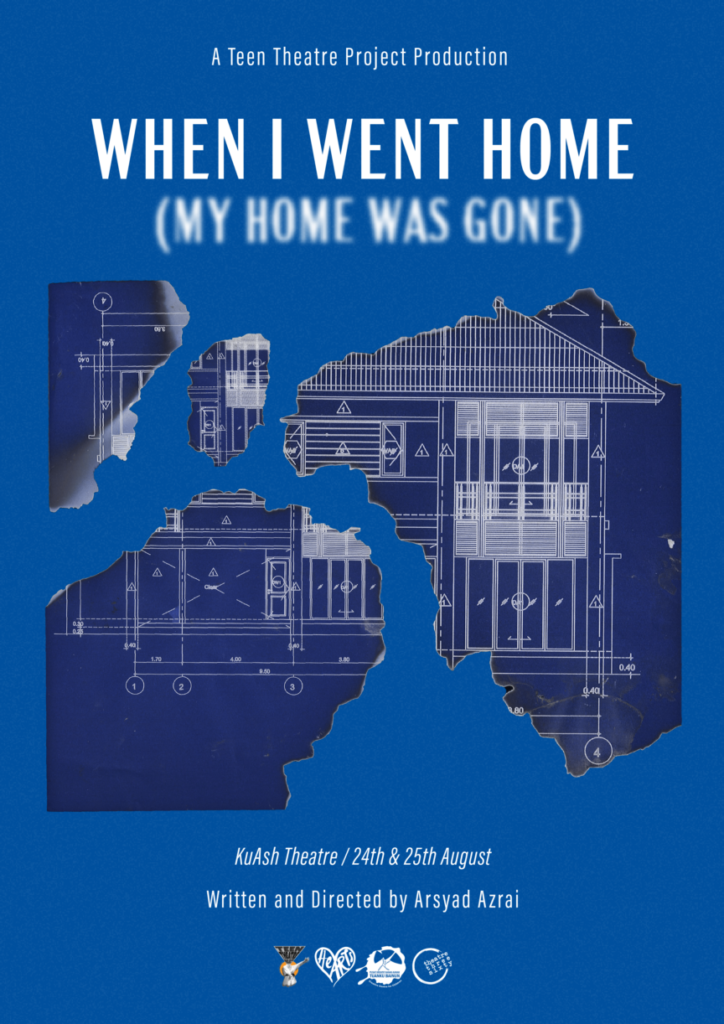
When I Went Home was one of the most emotionally profound productions I have been a part of. Set in a warm and familiar family home, the play explored the intricate bonds within a family and how their identities became intertwined with the objects that gave their lives purpose. When a significant household item went missing, each family member was forced to confront their sense of self, grappling with the loss and searching for a new identity as they attempted to move forward with life.
The story pushed me to delve into the subtleties of strained familial relationships and navigate how loss, even in its smallest forms, can ripple through lives.
Through When I Went Home, I discovered how theatre can transform everyday realities into reflections of identity. And I hold that close to me.
SWAGATAM ORCHESTRA
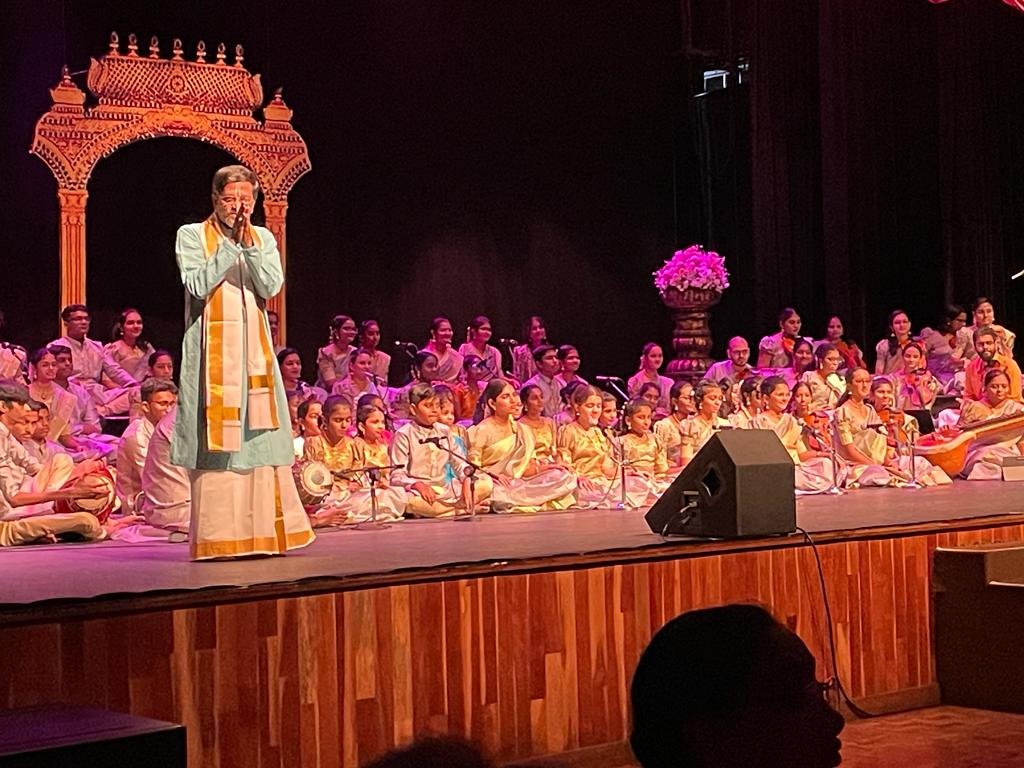
In Febuary 2023, I performed at the Temple Of Fine Arts, Sugam Culture & Heritage Foundation in alliance with Sangita Kalanidhi Vidhwan Shri Neyveli Santanagopalan. I sang traditional Carnatic compositions as part of the Swagatam Orchestra, supported by the high commission of india and the Azadi Ka Amrit Mahotsav. This was an initiative of the Government of India to celebrate the history of its people, culture and achievements. The Malaysian public broadcast service, TV2, broadcasted this performance on television. Additionally, as part of Swagatam, I performed at PIO festival in June 2023.
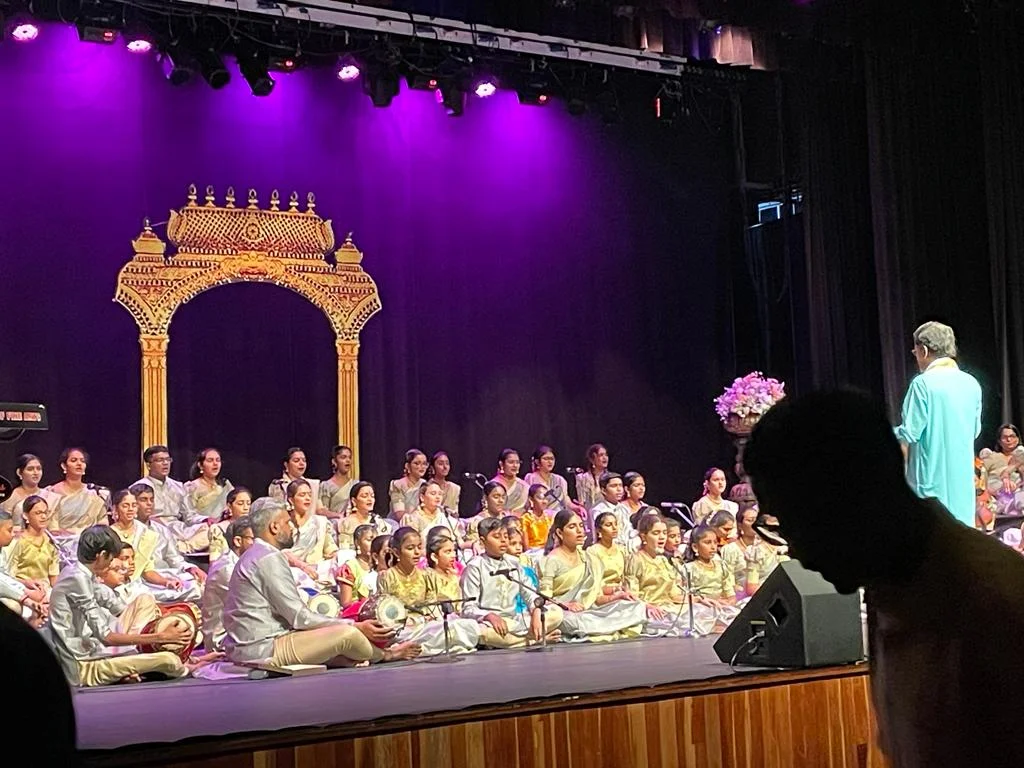
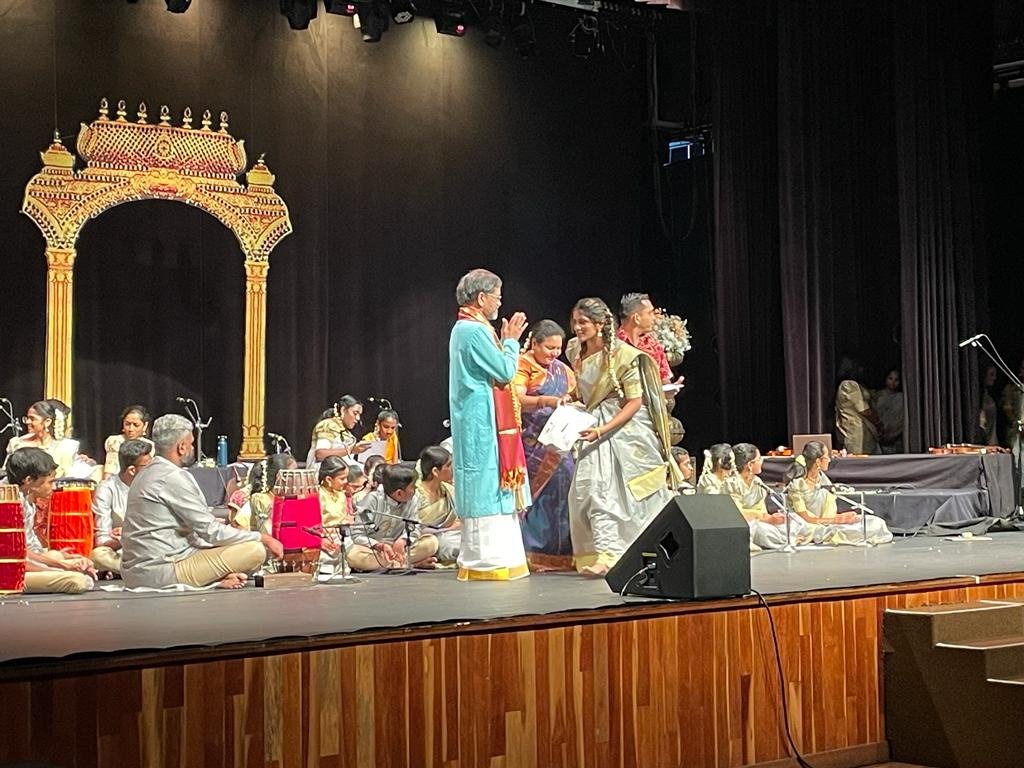
Here I am, a part of Swagatam, The Malaysian Indian Traditional Orchestra!
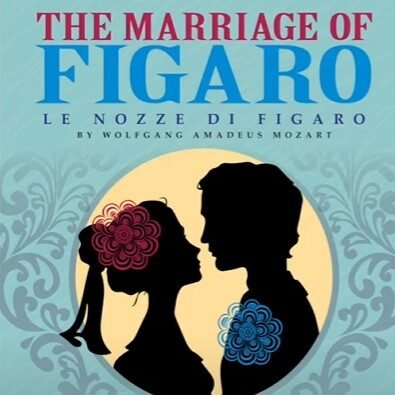
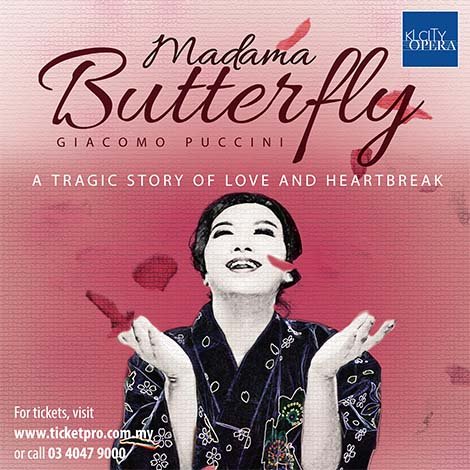
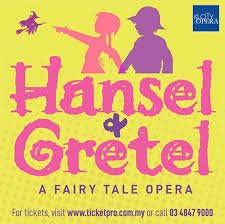
I performed in opera productions under the Opera for Kids and Opera for Teens programs, often singing in the choir and acting in selected scenes. These productions involved months of preparation, sometimes up to a whole year.
We performed in foreign languages such as Italian and German, immersing ourselves in the emotional depth of each composition. The shows were staged at the Kuala Lumpur Performing Arts Centre, an award-winning heritage space that became a kind of second home, where long hours of rehearsal were shaped into performances that truly connected with audiences.
In this video, I’m about ten years old, practicing the Beauty and the Beast medley as part of KL City Opera’s productions. It was one of those early moments where I truly fell in love with performing, not just singing, but feeling the music and bringing a story to life. Looking back, I had no idea how much this experience would shape me, but I’m so grateful for every step of the journey.
This is a clip from my performance with KL City Opera in The Marriage of Figaro. As part of the children’s choir, we danced and sang around the stage, bringing about a vibrant energy to the production.